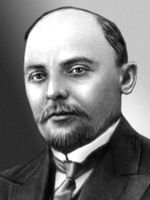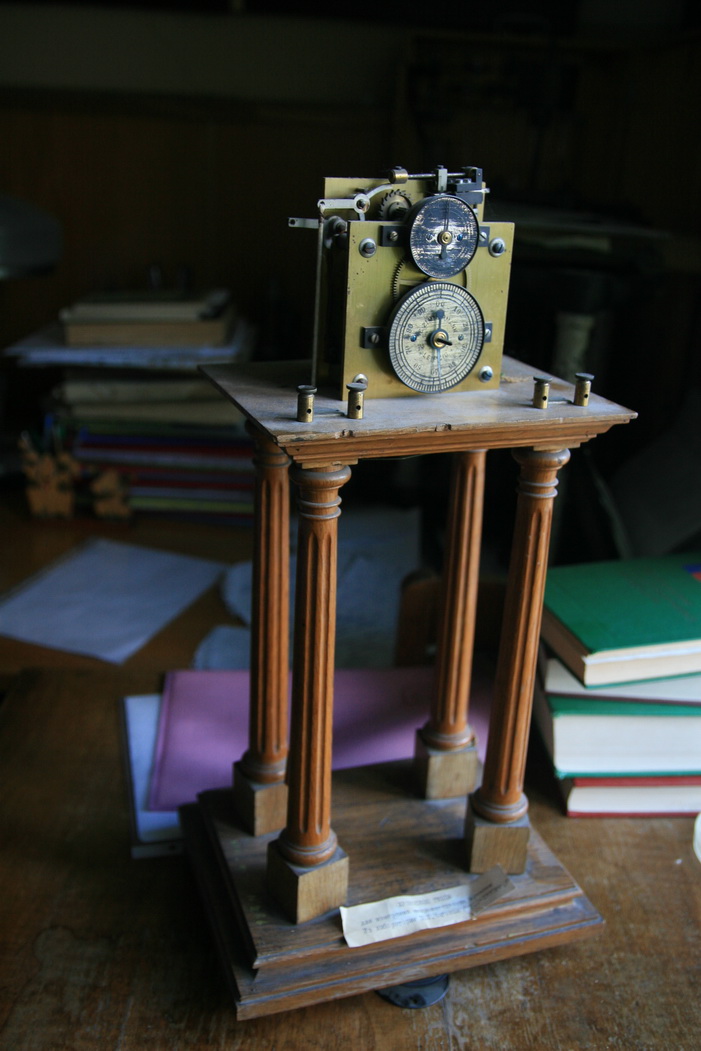Chagovets and Neminsky
In 1908 Neminsky enters physiology lab in Kyiv University. Since 1910 Vasyl Chagovets took the Chair of Physiology and started the most important albeit short period of Neminsky research.
 Vasyl Chagovets (1873-1941) was great Ukrainian and Russian physiologist. He studied in Emperors Military Medical Academy in St. Petersburg, in laboratory of Ivan Sechenov student physiologist Ivan Tarkhanov (he was Georgian – Ivane Tarkhnishvili). During his student life and shortly after graduation (1896-1898) Chagovets already published several works on chemical principles of electricity generation in neural and muscular tissues. Talented student paid attention to electrolyte dissociation theory formulated by Nobel Prize winner in chemistry Svante Arrhenius. Here is the way to explain how simple chemicals being separated by lipid membrane can be reason of electrical currents. Famous Ivan Pavlov was a reviewer of Chagovets doctoral thesis and was so much inspired by young Ukrainian’s ideas that invited him to Pavlov’s own lab and nominated for an academic award. Though nomination was supported by other great neurophysiologist Vladimir Bekhterev Chagovets lost to more political correct (and Russian nationalist) psychiatrist Ivan Sikorsky, father of well-known helicopter inventor. After this event Chagovets never tried to apply to any awards. Then, in 1910 he was elected chair of physiology in medical department of Kyiv University which he held till University close-up in 1920 and till 1935 in newly created Kyiv Medical Institute.
Vasyl Chagovets (1873-1941) was great Ukrainian and Russian physiologist. He studied in Emperors Military Medical Academy in St. Petersburg, in laboratory of Ivan Sechenov student physiologist Ivan Tarkhanov (he was Georgian – Ivane Tarkhnishvili). During his student life and shortly after graduation (1896-1898) Chagovets already published several works on chemical principles of electricity generation in neural and muscular tissues. Talented student paid attention to electrolyte dissociation theory formulated by Nobel Prize winner in chemistry Svante Arrhenius. Here is the way to explain how simple chemicals being separated by lipid membrane can be reason of electrical currents. Famous Ivan Pavlov was a reviewer of Chagovets doctoral thesis and was so much inspired by young Ukrainian’s ideas that invited him to Pavlov’s own lab and nominated for an academic award. Though nomination was supported by other great neurophysiologist Vladimir Bekhterev Chagovets lost to more political correct (and Russian nationalist) psychiatrist Ivan Sikorsky, father of well-known helicopter inventor. After this event Chagovets never tried to apply to any awards. Then, in 1910 he was elected chair of physiology in medical department of Kyiv University which he held till University close-up in 1920 and till 1935 in newly created Kyiv Medical Institute.

We know nothing of Volodymyr Neminsky research in physiology before Chagovets as none of this was published. Possibly there was nothing important as he had to teach in gymnasium to support himself. Neminsky was a teacher of geography and natural science in 6th Kyiv Gymnasium around 1909.

But in 1910 Chagovets arrived and immediately applied for funding for improvement of physiology equipment. He got 20,000 golden roubles (appr. $10,000 of that time which with inflation correction means almost $250,000 in modern US dollars) and bought the most novel German equipment: galvanometers, kymograph, rheostats, microscopes, timers etc. He organized modern animal operation clinics taken as the specimen Pavlov’s lab.
With newly bought equipment Neminsky eagerly started his experiments. He used recently invented Einthoven string galvanometer to record brain and muscle electrical signals.
…

As a result of his research Neminsky published 2 papers in then well-known German journals Archiv für Physiologie and Zentralblatt für Physiologie (later merged into what we know now as Pflüger’s Archive). Both were issued in 1913. First was a description of “action currents” in central nervous system of a frog. Another was historical work of non-invasive electric measuring on dog’s brain. He found “spontaneous electric fluctuations” which he showed independent of blood pressure and peripheral nerves electric ac tivity.
tivity.
This page is funded by FENS History Project 2016 grant. Author: Oleksii Boldyriev.

This work is licensed under a Creative Commons Attribution 4.0 International License.





Коментарі